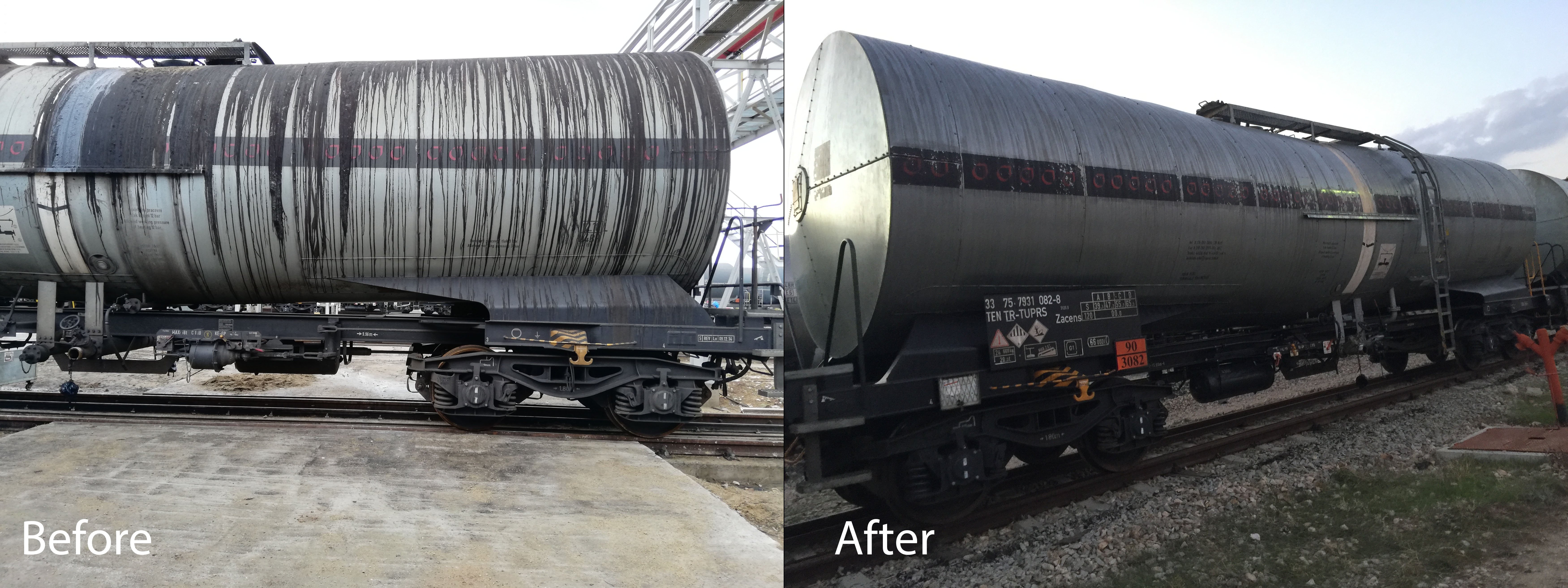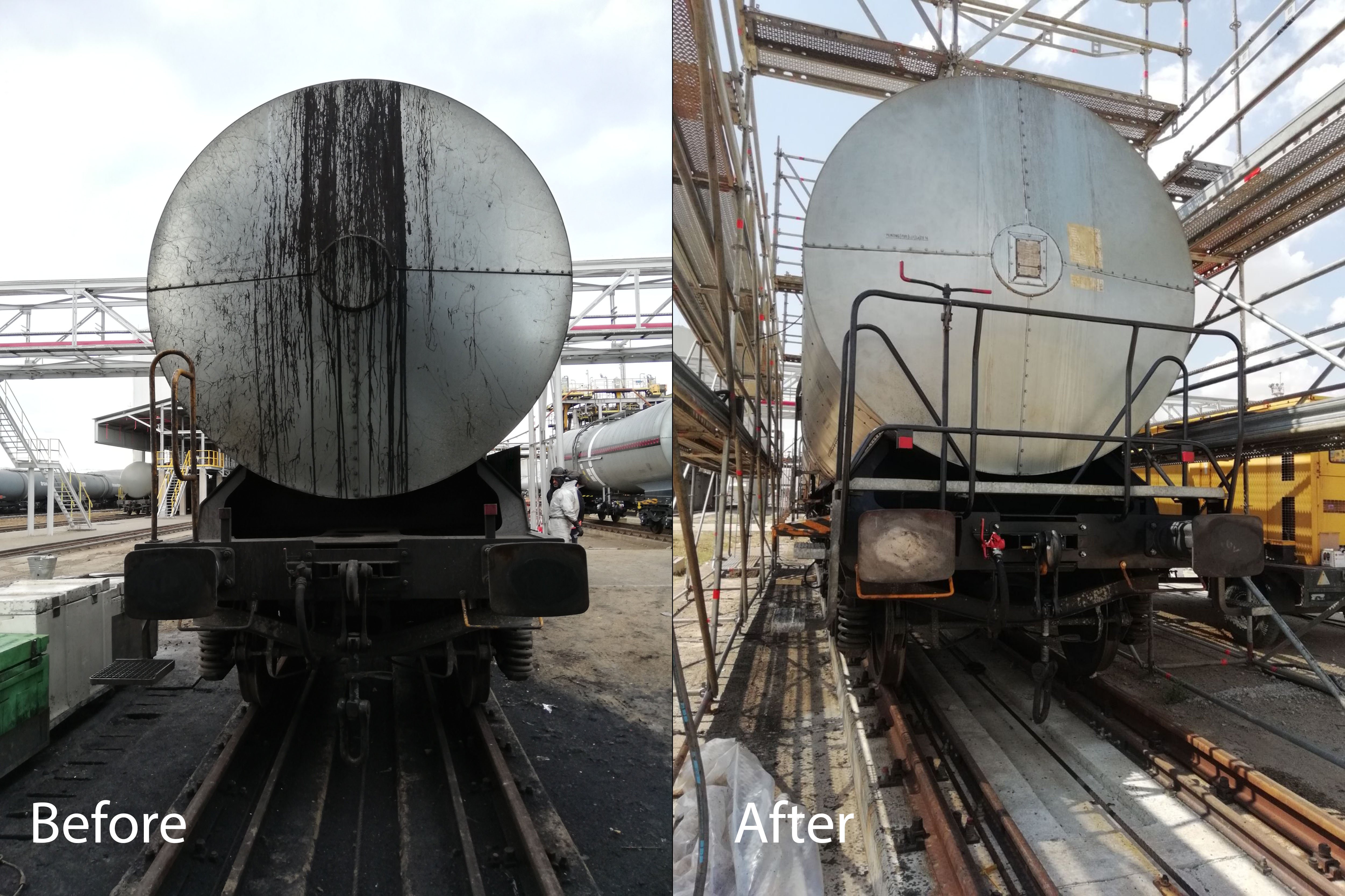Tüpraş had a problem with dirty trains.
The company is the only manufacturer in the refining sector in Turkey and has the capacity to process 28.1 million tons of crude oil annually with its four refineries in Kocaeli, Izmir, Kırıkkale, and Batman. It is the largest industrial company in Turkey and the 7th largest refining company in Europe.
The company transports its heavy petroleum products in railway wagons. The wagons are used on a regular and demanding schedule to maintain the company’s efficient and steady output.
In order to continue the transportation of petroleum products in accordance with the safety instructions, the wagons, carrying the heavy petroleum products, had to be cleaned for the first time.
Among the company's requirements for a cleaning solution were:
-
Ability to clean the contamination which had built up over 10 years on 149 wagons
-
Cleaning had to be done without harming the environment
-
Avoid any risks associated with the fire in the refinery
-
Eliminate cleaning options associated with chemical cleaners
Railway wagons used for petroleum products had accumulated heavy buildup over the years. In order to maintain safe transportation, a thorough cleaning was necessary.

Tüpraş implemented dry ice blasting
Tüpraş needed a cleaning method that would reduce maintenance time and avoid hazardous chemicals in order to get the wagons back on their normal delivery schedule.
Dry ice blasting is an air-powered media blasting system which uses solid carbon dioxide (CO2), or dry ice, in place of other media or chemicals. Unlike the other blasting techniques, dry ice sublimates (converts from solid to gas) upon impact with the surface being cleaned, leaving no residue behind other than what was removed during the cleaning process. This results in a cleaning technique that is safe and non-toxic, does not create further contamination and reduces or eliminates exposure to dangerous chemical cleaning agents.
It is a non-abrasive medium that uses the combination of dry ice cleaning’s kinetic energy and thermal effects to break the connection between the dirt and surface, lifting away contaminants.
Learn more about how dry ice blasting works.
The company bought a dry ice blasting machine after a successful test in the Izmit plant. Tüpraş has utilized the machine to clean the wagons that are used for the transportation of petroleum products in the Kırıkkale Refinery.
Using dry ice blasting, Akat Cevre cleaned their railway wagons for the first time. This was a massive project.
The job was successfully done and 149 wagons cleaned with:
-
Four dry ice blasters
-
Two scaffolds
-
13 employees
-
Two shifts, six days a week, for six months
-
230,000 kg of dry ice
Because it is a dry clean, dry ice cleaning reduces conditions where cleaning with water or other solvents could be problematic.
The deep clean has made maintenance on the wagons significantly easier for the maintenance team. They can focus on other tasks, while the major cleaning is done in a more efficient way.

Tüpraş experienced great results with dry ice
The dry ice blasting solution has reduced maintenance time, costs, and the use of chemicals during the cleaning of its wagons - while avoiding danger of open fire in the refinery. The cleaned wagons quickly became operable and transportation of petroleum products could start up again on a normal schedule.
Dry ice cleaning is best utilized as a routine preventative maintenance. If there is heavy buildup of debris and oil, then the speed of cleaning will be significantly reduced. The result of cleaning with dry ice varies depending on the contaminant and type of radiator.
Learn more about dry ice blasting in oil and gas
Dry ice cleaning is also environmentally responsible. The process eliminates chemicals from the cleaning process and does not generate any secondary waste.
In the US, the Environmental Protection Agency (EPA) monitors fracing well sites closely and eliminating the chemicals is a major benefit.

.png) English
English
